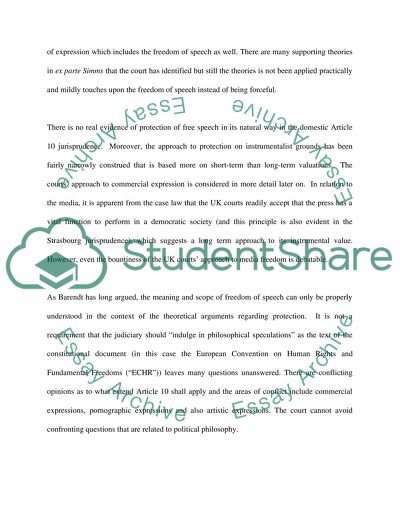Cite this document
(“'The Human Rights Act 1998 is an important but problematic addition to Essay”, n.d.)
Retrieved from https://studentshare.org/law/1578189-the-human-rights-act-1998-is-an-important-but-problematic-addition-to-the-protection-of-liberties-in-britain-discuss-with-particular-reference-to-the-following-right-under-the-european-convention-on-human-rights-freedom-of-expression
Retrieved from https://studentshare.org/law/1578189-the-human-rights-act-1998-is-an-important-but-problematic-addition-to-the-protection-of-liberties-in-britain-discuss-with-particular-reference-to-the-following-right-under-the-european-convention-on-human-rights-freedom-of-expression
('The Human Rights Act 1998 Is an Important But Problematic Addition to Essay)
https://studentshare.org/law/1578189-the-human-rights-act-1998-is-an-important-but-problematic-addition-to-the-protection-of-liberties-in-britain-discuss-with-particular-reference-to-the-following-right-under-the-european-convention-on-human-rights-freedom-of-expression.
https://studentshare.org/law/1578189-the-human-rights-act-1998-is-an-important-but-problematic-addition-to-the-protection-of-liberties-in-britain-discuss-with-particular-reference-to-the-following-right-under-the-european-convention-on-human-rights-freedom-of-expression.
“'The Human Rights Act 1998 Is an Important But Problematic Addition to Essay”, n.d. https://studentshare.org/law/1578189-the-human-rights-act-1998-is-an-important-but-problematic-addition-to-the-protection-of-liberties-in-britain-discuss-with-particular-reference-to-the-following-right-under-the-european-convention-on-human-rights-freedom-of-expression.


